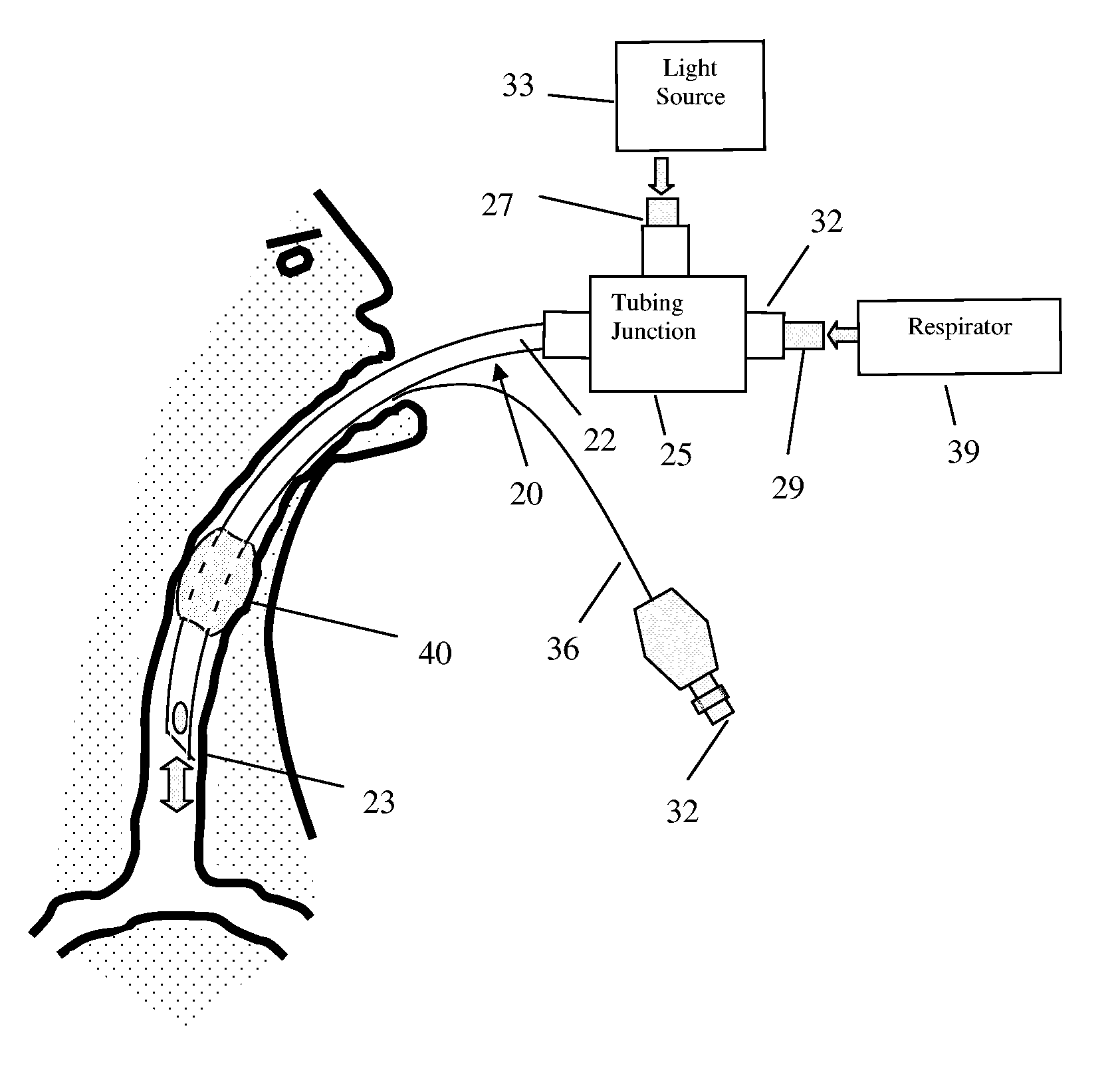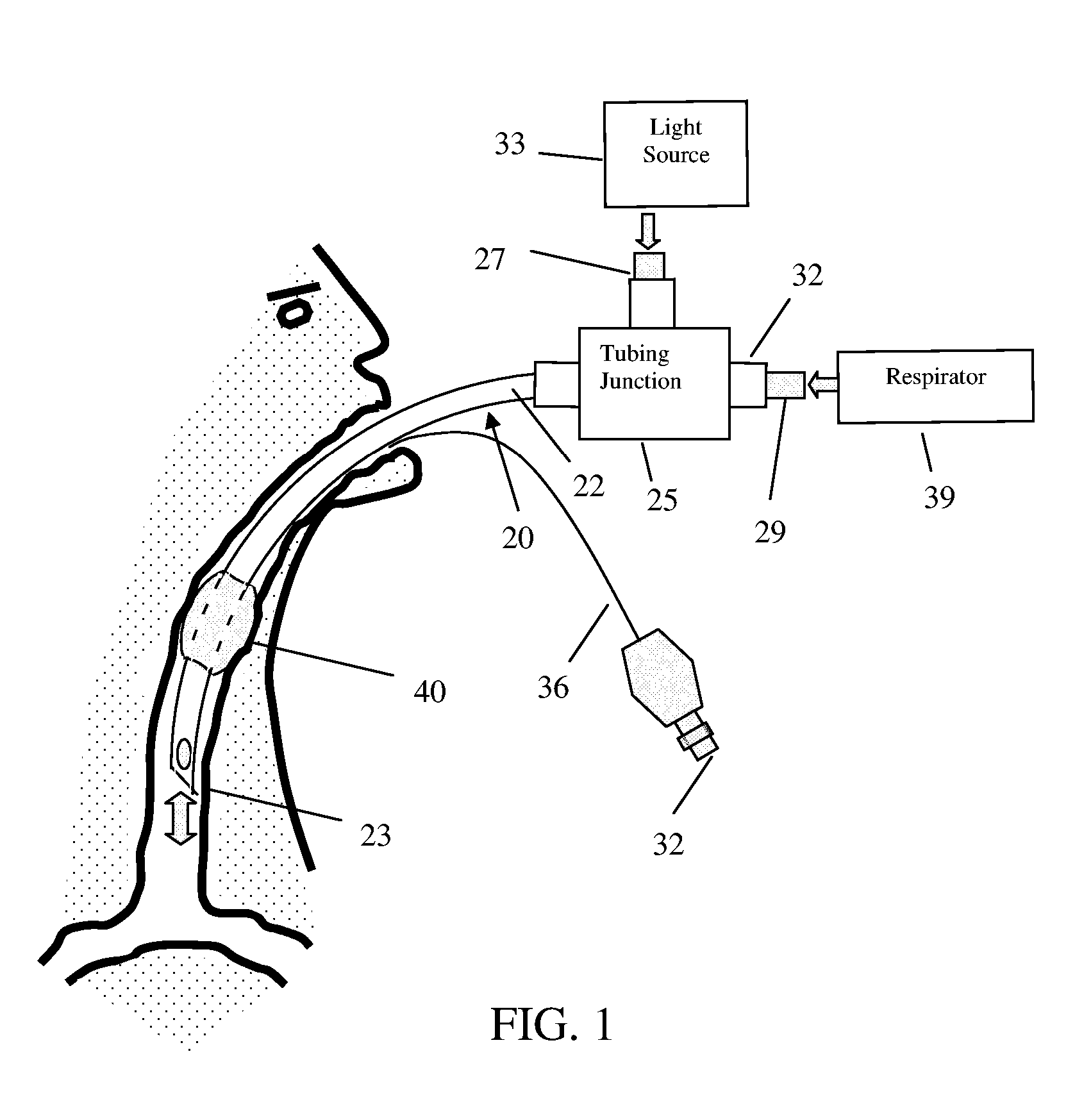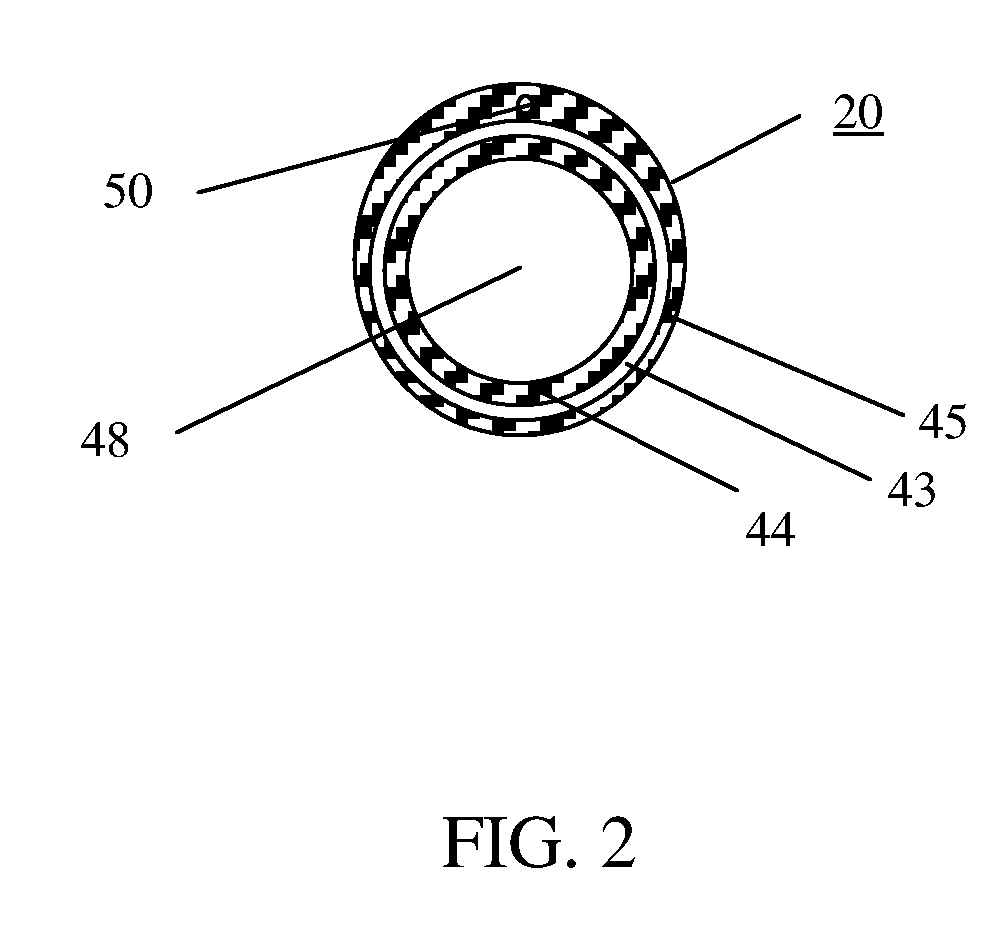Structures and Methods for the Joint Delivery of Fluids and Light
a technology of fluids and joints, applied in the direction of catheters, spectroscopy diagnostics, therapy, etc., can solve the problems of low optical absorption, low optical absorption, and high optical intensities local to optical fiber endfaces, etc., to facilitate interaction, low optical absorption, and low optical absorption
- Summary
- Abstract
- Description
- Claims
- Application Information
AI Technical Summary
Benefits of technology
Problems solved by technology
Method used
Image
Examples
example
IR Light Guided Catheter
[0061] A nurse or doctor have no direct feedback regarding the location of the catheter tip when inserting a tube-like catheter into a vein or artery in the absence of a relatively expensive fluoroscopy procedure. This leads to a higher incidence of errors in the placement of the catheter and possible serious medical complications. Bard Inc. had introduced a CathTrack™ catheter locating system based on electronic detection which was not commercially successful because the limited spatial resolution and inconvenience of usage. Alternately, fluoroscopy or ultrasound imaging techniques may provide a real time image of the catheter location; however, these systems are cost prohibitive in most situations. Today, a post implantation x-ray is performed after catheter insertion to confirm catheter tip location and to ensure that the catheter is not being pinched by the clavicle or ribs. This provides a location accuracy of about + / −1 cm. Approaches using near infrar...
PUM
 Login to View More
Login to View More Abstract
Description
Claims
Application Information
 Login to View More
Login to View More - R&D
- Intellectual Property
- Life Sciences
- Materials
- Tech Scout
- Unparalleled Data Quality
- Higher Quality Content
- 60% Fewer Hallucinations
Browse by: Latest US Patents, China's latest patents, Technical Efficacy Thesaurus, Application Domain, Technology Topic, Popular Technical Reports.
© 2025 PatSnap. All rights reserved.Legal|Privacy policy|Modern Slavery Act Transparency Statement|Sitemap|About US| Contact US: help@patsnap.com



